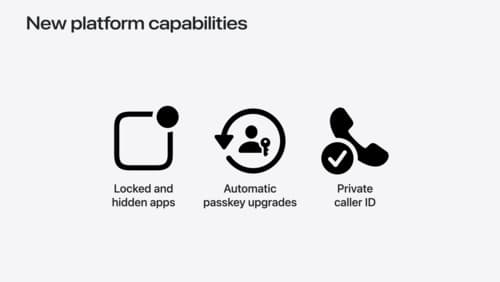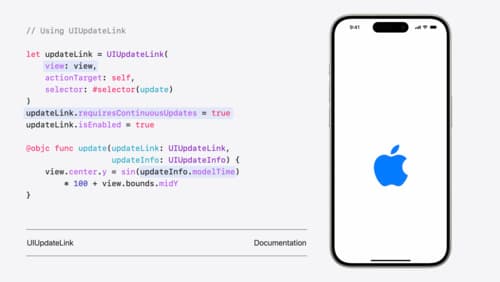How does react native work with iOS 18?
Asked on 2024-08-02
1 search
React Native is not specifically mentioned in the provided context from WWDC. However, if you are looking to integrate React Native with iOS 18, you would generally need to ensure compatibility with the new features and changes introduced in iOS 18. Here are some relevant updates from WWDC that might impact your React Native app:
-
UIKit Enhancements: iOS 18 introduces new features in UIKit, such as improved transitions, animations, and a new document launch experience. You might want to adopt these new features to enhance the user experience in your React Native app. For more details, you can refer to the session What’s new in UIKit.
-
Privacy Updates: iOS 18 brings more transparency and control over access to local network, Bluetooth, and contacts. If your React Native app requests access to contacts, you will need to handle the new two-stage contacts prompt. For more information, see the session What’s new in privacy.
-
Device Management: There are updates in device management, such as the requirement for a device restart when installing proprietary in-house apps using a new team identity. This might be relevant if your React Native app is distributed in-house. For more details, see the session What’s new in device management.
-
Live Activities: If your React Native app uses live activities, you can now customize the live activity view for Apple Watch. This can enhance the experience for users who have updated to iOS 18 and watchOS 11. For more information, see the session Bring your Live Activity to Apple Watch.
-
RealityKit and 3D Experiences: iOS 18 includes updates to RealityKit, which simplifies the process of rendering 3D models. If your React Native app includes 3D content, you might want to explore these new capabilities. For more details, see the session Platforms State of the Union.
-
Game Mode: iOS 18 introduces game mode, which reduces background activity and Bluetooth latency, improving input and headphone responsiveness. If your React Native app is a game, you might want to opt into game mode. For more information, see the session Port advanced games to Apple platforms.
For a comprehensive understanding, you might want to explore the full sessions mentioned above.

Platforms State of the Union
Discover the newest advancements on Apple platforms.

What’s new in privacy
At Apple, we believe privacy is a fundamental human right. Learn about new and improved permission flows and other features that manage data in a privacy-preserving way, so that you can focus on creating great app experiences.

What’s new in UIKit
Explore everything new in UIKit, including tab and document launch experiences, transitions, and text and input changes. We’ll also discuss better-than-ever interoperability between UIKit and SwiftUI animations and gestures, as well as general improvements throughout UIKit.
